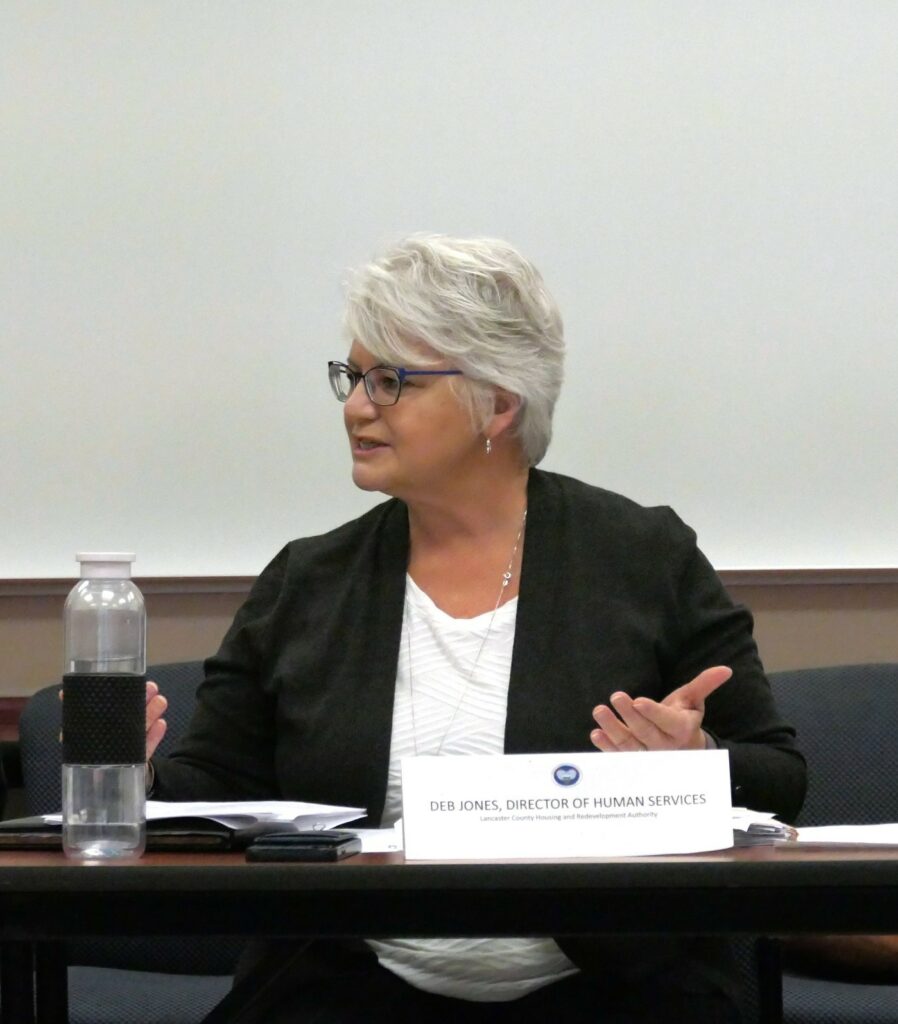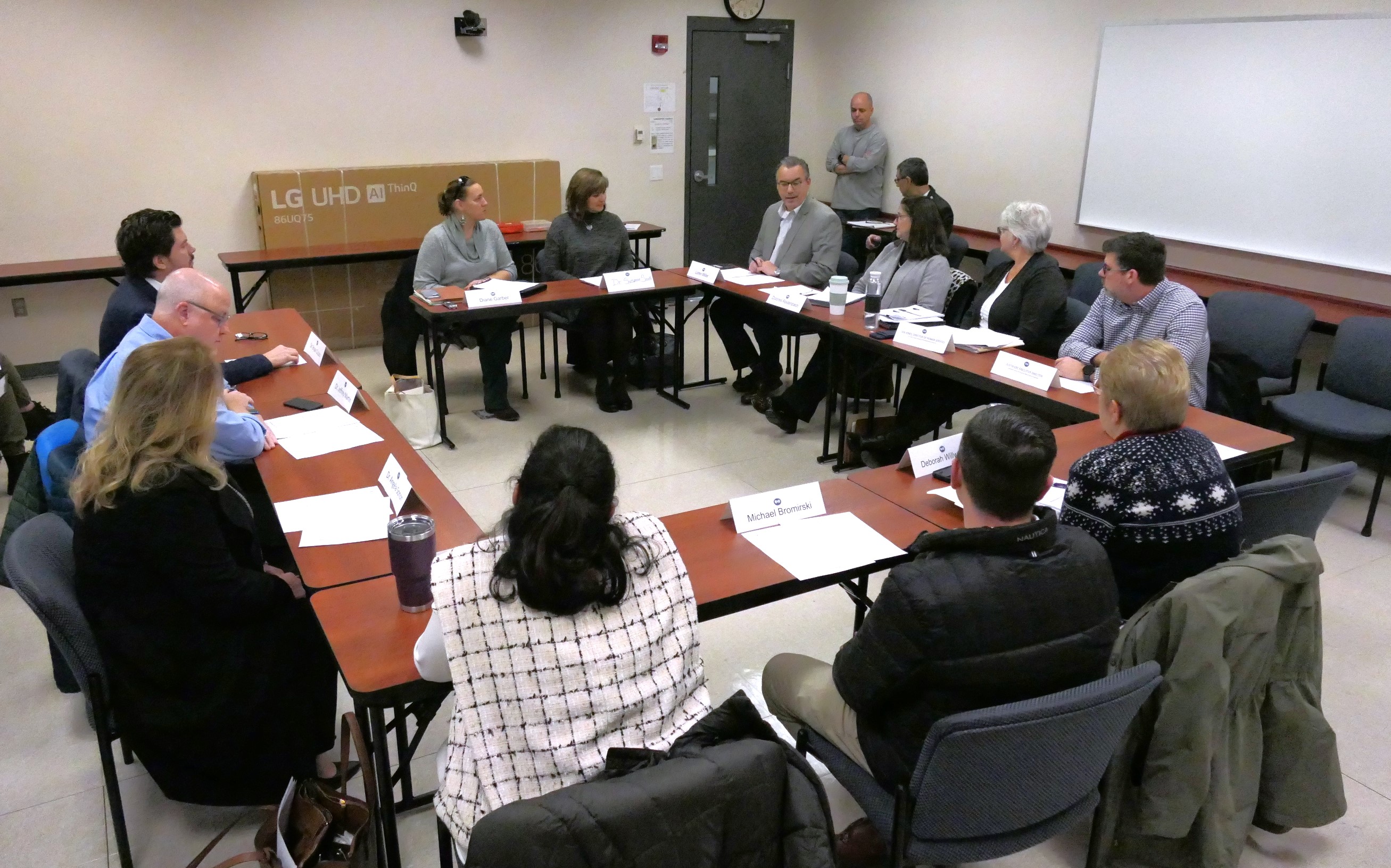The head of Lancaster County’s homelessness response system made an impassioned plea for cooperation Friday to leaders of the county’s major health providers.
“Everyone needs to come together to foster ownership of the challenges,” said Deb Jones, director of the office of the Lancaster County Homelessness Coalition.
Jones was speaking to the county’s freshly reauthorized Health Advisory Council, which held its first meeting of 2024 at the Public Safety Training Center.
Its members include representatives of the county’s four health systems — Penn Medicine Lancaster General Health, Penn State Health, UPMC and WellSpan Health. Also represented, beginning this year, is Union Community Care, a federally qualified health center that focuses on vulnerable populations in Lancaster and Lebanon counties.

It’s well recognized that homelessness is a risk factor for poor health, Jones said; and that the homelessness crisis puts immense stress on healthcare institutions.
Homeless individuals are high utilizers of emergency departments, often resorting to them in lieu of urgent care or primary care. Their health problems are often serious, due to the stresses of unsheltered life and a lack of routine checkups and preventive measures.
Hospitals and doctors’ offices often struggle with individuals’ needs for social services. They may hold someone longer than medically necessary while waiting for an appropriate placement — an expensive proposition — or end up releasing someone back to the street for lack of an alternative.
Collaboration between the coalition and health systems could address all those issues and more, Jones said. She offered a sampling of “best practices” for the health organizations to consider:
- Designate social workers to serve as liaisons between Emergency Departments and homelessness services;
- Provide funding for emergency shelter beds that would be reserved for homelessness individuals transitioning from a higher (and more expensive) level of acute or rehabilitative care.
- Partner with managed care organizations to support outreach workers. (Managed care organizations coordinate care, for Medicaid patients, including some social services.)
- Support Lancaster County’s annual Point-in-Time or “PIT” count by providing headcounts of Emergency Department and inpatient homeless individuals
- Financially underwrite the coalition’s efforts to expand services
The 2024 PIT count is coming up soon, on the night of Jan. 24-25, Jones said. Last year, the count increased 11%, from 427 people to 526, in part due to the coalition’s more thorough efforts to find people sleeping outside. (The count includes people at shelters, too.)
The coalition knows 526 is still an undercount, Jones said. Among other things, although volunteers also interviewed people being released from Lancaster General Hospital’s emergency department, that’s just the start of what should be a thorough census of area hospitals.
Dr. Susanne Scott noted the PIT count’s concentration in Lancaster’s urban centers and asked about rural areas. Last year, 42 volunteers took part in canvassing; Jones said: The coalition plans to recruit more this year so it can increase its coverage in locations like the county’s southern end.
What about homeless students, Hempfield School District Superintendent Michael Bromirski asked. They’re counted under a different standard that includes things like couch-surfing and staying with relatives, Jones said. That’s handled through Pennsylvania’s “Education for Children & Youth Experiencing Homelessness,” system, which shares data with the coalition on students who are in emergency shelters, cars or other acute homelessness predicaments.
Deborah Willwerth, president of UPMC Lititz, said the hospital struggles to deal with undocumented homeless individuals, who are ineligible for Medicaid. Alisa Jones, president of Union Community Care, said she’s hearing anecdotally of homeless individuals arriving in Lancaster County from elsewhere.
Deb Jones said there have indeed been some reports of individuals discharged from prisons or mental health facilities being sent here, despite having no connections to the area, and said she’d look into the issue further.
No one is checking with local officials first, she said, and it’s frustrating: “Our homeless response system cannot keep up with the need.”
Before Jones’ presentation, the council re-elected Diane Garber and Dr. Susanne Scott as chair and vice chair. The council has shifted to bimonthly meetings, and is due to meet next on Friday, March 1.







